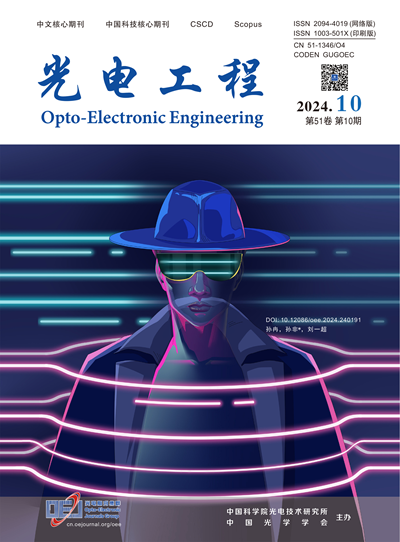Soft multilabel learning and deep feature fusion for unsupervised person re-identification
Q3 Engineering
引用次数: 0
Abstract
When the microLED is in the forward working direction, it is difficult to precisely adjust its voltage to obtain different brightness. Moreover, when the microLED/OLED is turned on, they will be in a closed state for a long time, causing the image display brightness to be deteriorated by the human eye. In order to solve these problems, this paper proposes a dual-frame decentralized fusion scanning strategy to achieve different brightness by adjusting the microLED/OLED on-time. Firstly, the method de-weights the data bits and inserts their on-times into the closed time. Then the data bit weights are double-frame fused after decentralization. Finally, the scanning order of the data bits is redefined. According to the proposed scanning strategy, we designed a scanning controller to drive digital on-silicon microdisplay. The results show that the dual-frame decentralized fusion scan proposed in this paper can accurately adjust the luminance of microLED/OLED and improve the brightness of the image observed by human eyes. Compared with other scanning strategies, the scanning strategy improves the scanning efficiency to 93.75%, the field frequency is increased to 2040 Hz, the scanning clock frequency is 102.36 MHz, and the scanning data bandwidth is reduced. The feasibility of the scan controller is proved by testing at last.基于软多标签学习和深度特征融合的无监督人再识别
当microLED处于正工作方向时,很难精确调节其电压以获得不同的亮度。而且,当microLED/OLED开启时,它们将长时间处于关闭状态,导致人眼对图像显示亮度的影响变差。为了解决这些问题,本文提出了一种双帧分散融合扫描策略,通过调整微led /OLED的亮时来实现不同的亮度。首先,该方法对数据位进行去权处理,并将其开启时间插入到关闭时间中。然后对数据进行去中心化后的双帧融合。最后,重新定义了数据位的扫描顺序。根据所提出的扫描策略,设计了一种驱动数字硅微显示器的扫描控制器。结果表明,本文提出的双帧分散融合扫描能够准确调节微led /OLED的亮度,提高人眼观察到的图像亮度。与其他扫描策略相比,该扫描策略将扫描效率提高到93.75%,场频率提高到2040 Hz,扫描时钟频率为102.36 MHz,扫描数据带宽降低。最后通过测试验证了扫描控制器的可行性。
本文章由计算机程序翻译,如有差异,请以英文原文为准。
求助全文
约1分钟内获得全文
求助全文
来源期刊

光电工程
Engineering-Electrical and Electronic Engineering
CiteScore
2.00
自引率
0.00%
发文量
6622
期刊介绍:
Founded in 1974, Opto-Electronic Engineering is an academic journal under the supervision of the Chinese Academy of Sciences and co-sponsored by the Institute of Optoelectronic Technology of the Chinese Academy of Sciences (IOTC) and the Optical Society of China (OSC). It is a core journal in Chinese and a core journal in Chinese science and technology, and it is included in domestic and international databases, such as Scopus, CA, CSCD, CNKI, and Wanfang.
Opto-Electronic Engineering is a peer-reviewed journal with subject areas including not only the basic disciplines of optics and electricity, but also engineering research and engineering applications. Optoelectronic Engineering mainly publishes scientific research progress, original results and reviews in the field of optoelectronics, and publishes related topics for hot issues and frontier subjects.
The main directions of the journal include:
- Optical design and optical engineering
- Photovoltaic technology and applications
- Lasers, optical fibres and communications
- Optical materials and photonic devices
- Optical Signal Processing
 求助内容:
求助内容: 应助结果提醒方式:
应助结果提醒方式:


